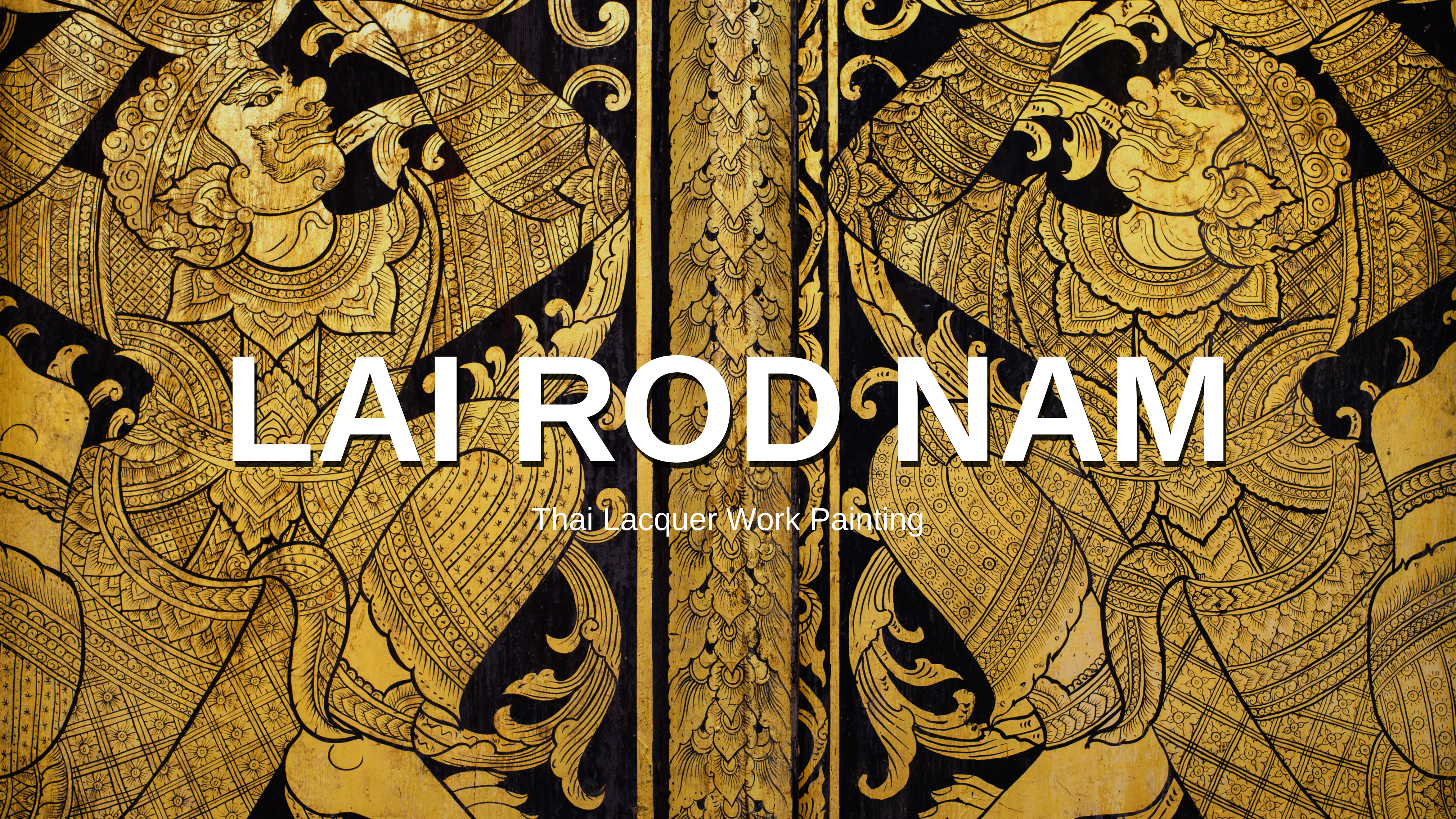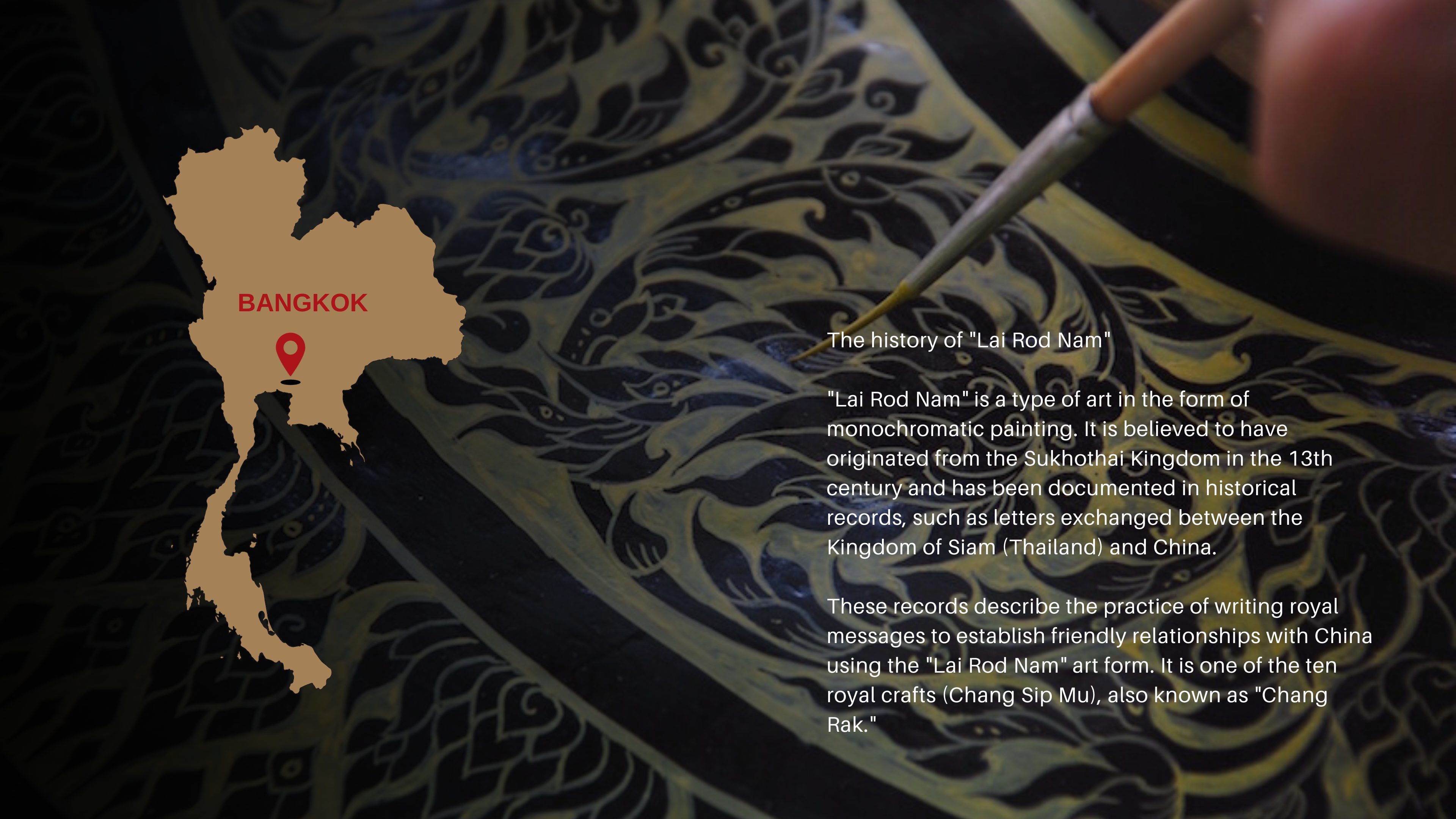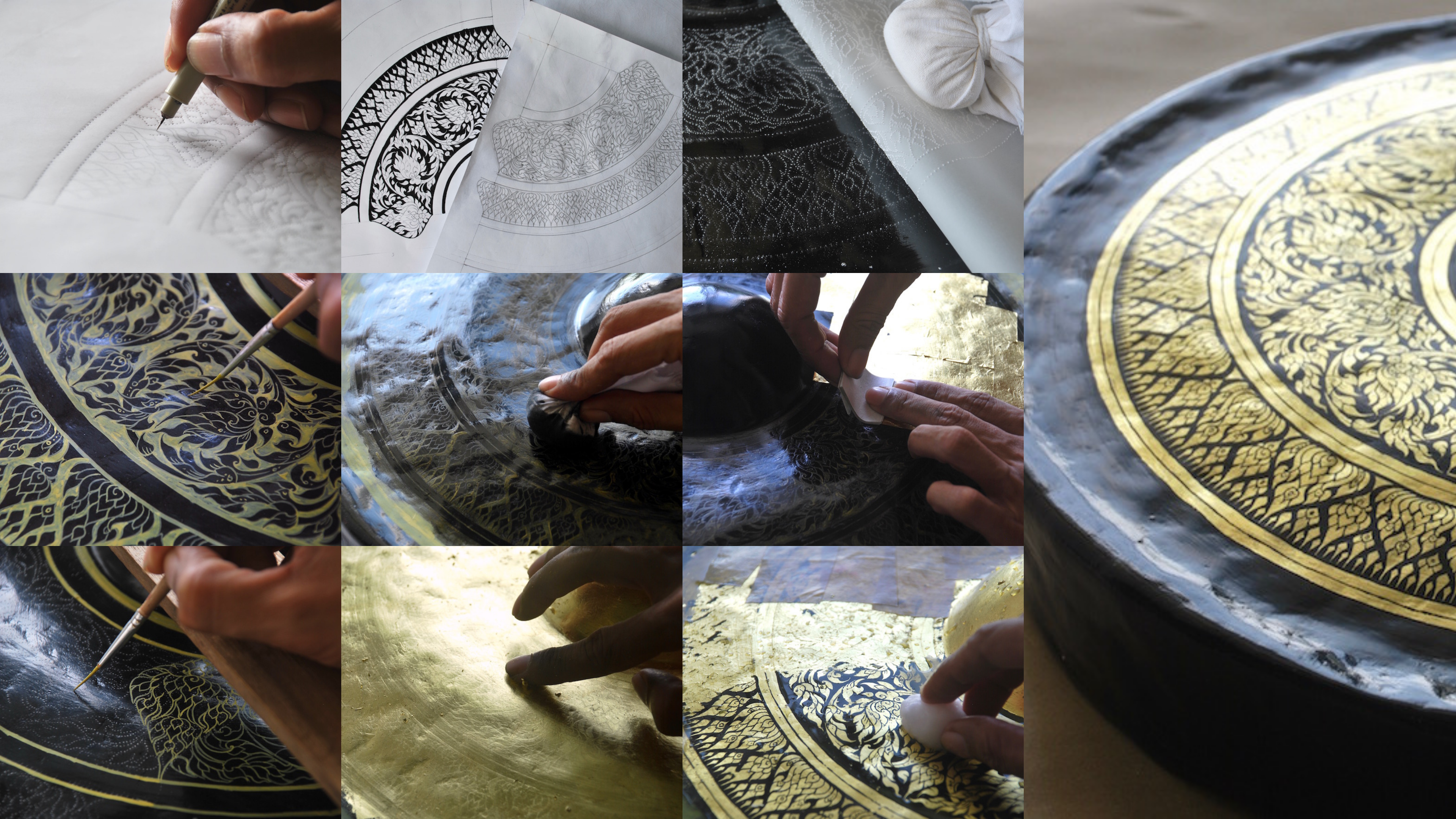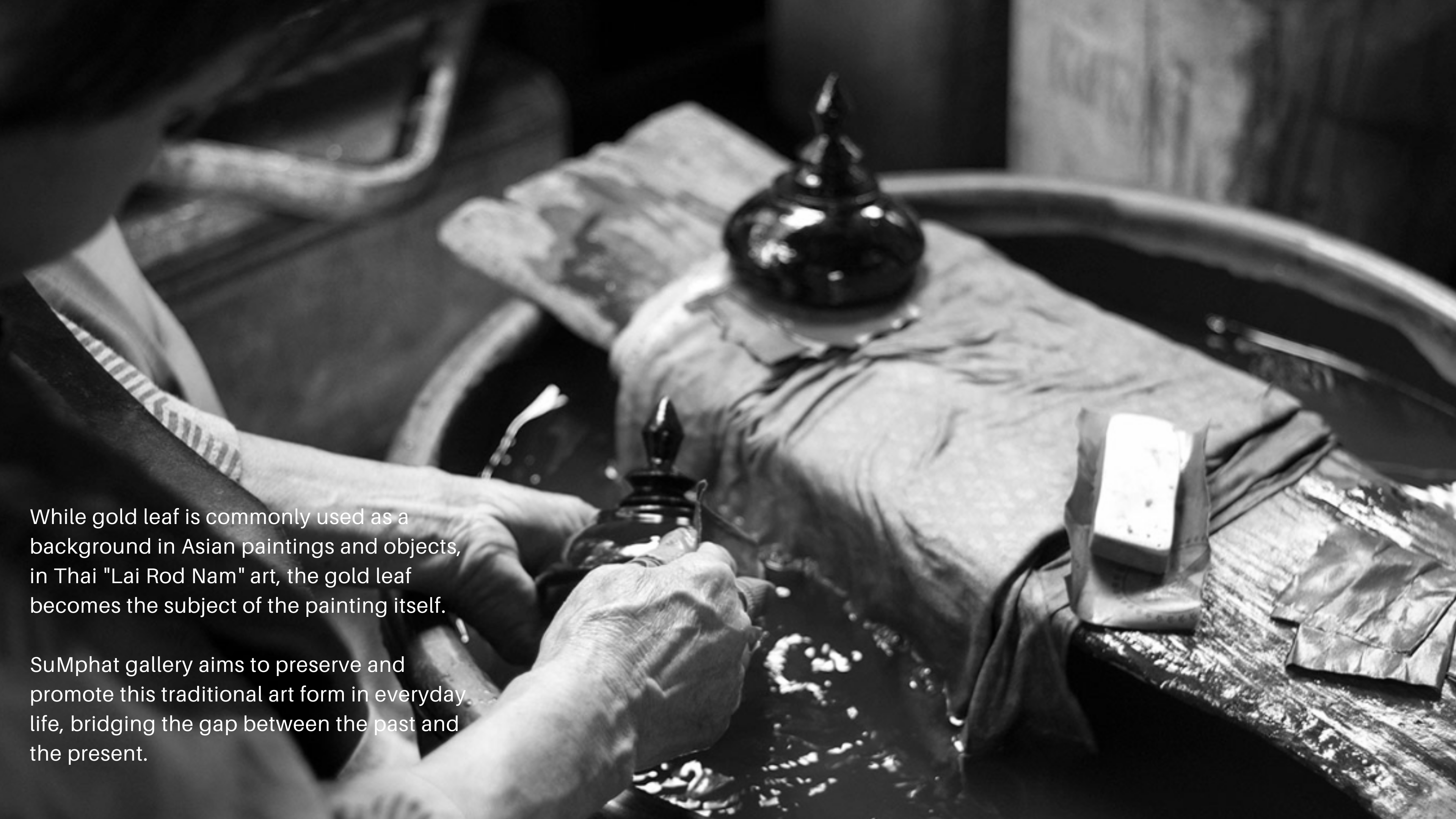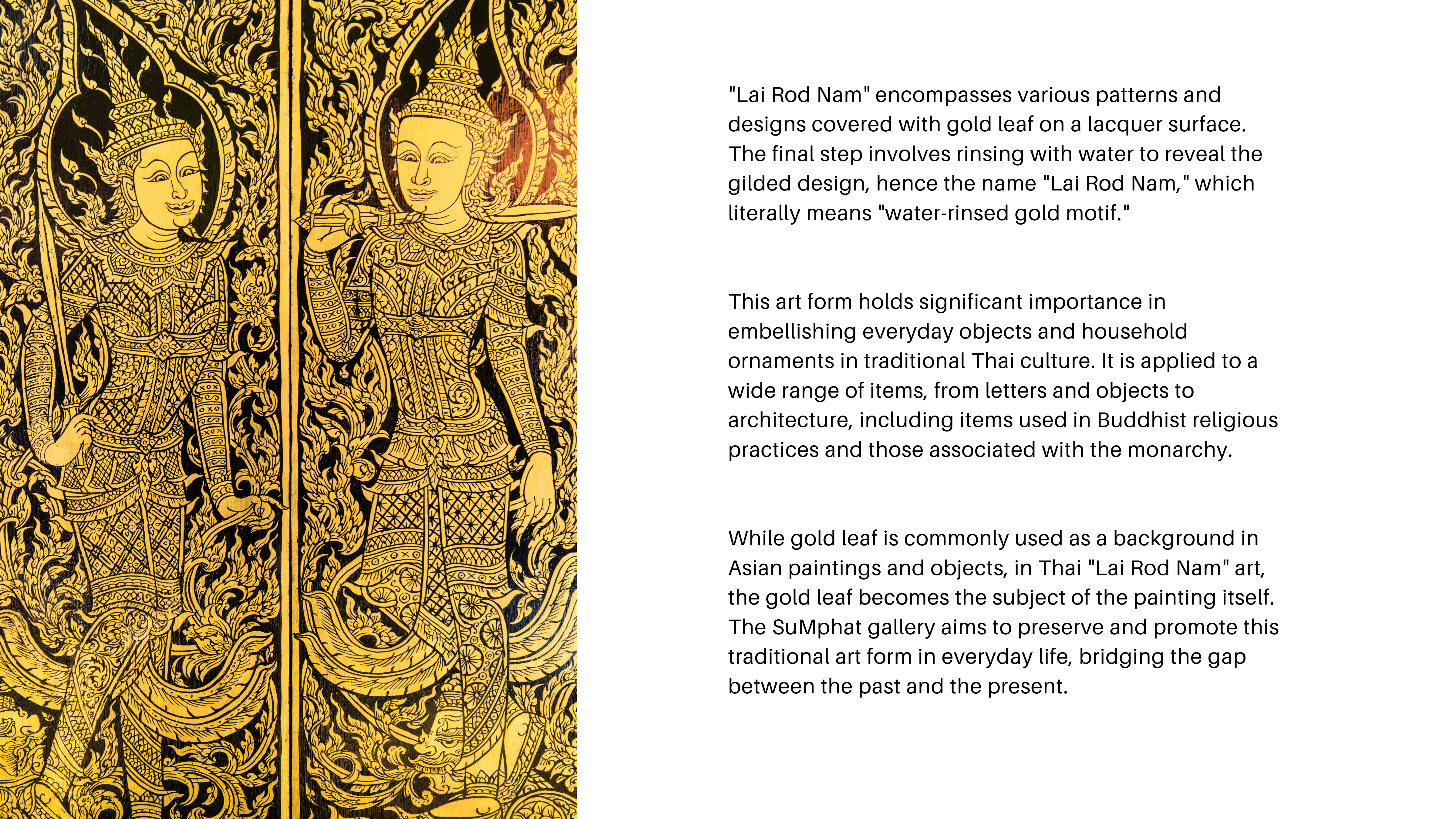THAI LACQUER WORK PAINTING
HERITAGE TECHNIQUEThe history of “Lai Rod Nam”
“Lai Rod Nam” is a type of art in the form of monochromatic painting. It is believed to have originated from the Sukhothai Kingdom in the 13th century and has been documented in historical records, such as letters exchanged between the Kingdom of Siam (Thailand) and China.
These records describe the practice of writing royal messages to establish friendly relationships with China using the “Lai Rod Nam” art form. It is one of the ten royal crafts (Chang Sip Mu), also known as “Chang Rak.”
“Lai Rod Nam” encompasses various patterns and designs covered with gold leaf on a lacquer surface. The final step involves rinsing with water to reveal the gilded design, hence the name “Lai Rod Nam,” which literally means “water-rinsed gold motif.”
This art form holds significant importance in embellishing everyday objects and household ornaments in traditional Thai culture. It is applied to a wide range of items, from letters and objects to architecture, including items used in Buddhist religious practices and those associated with the monarchy.
While gold leaf is commonly used as a background in Asian paintings and objects, in Thai “Lai Rod Nam” art, the gold leaf becomes the subject of the painting itself. The SuMphat gallery aims to preserve and promote this traditional art form in everyday life, bridging the gap between the past and the present.



